Sliding Interior Doors: Complete Buyer’s Guide
Table of Contents
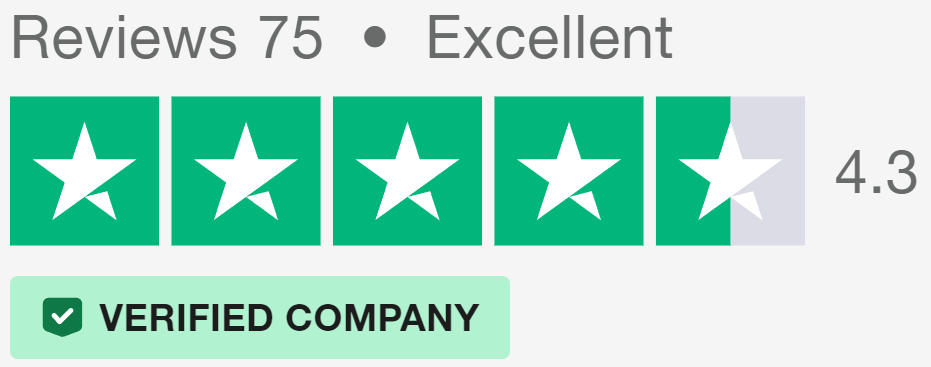
Why Choose Sliding Interior Doors?
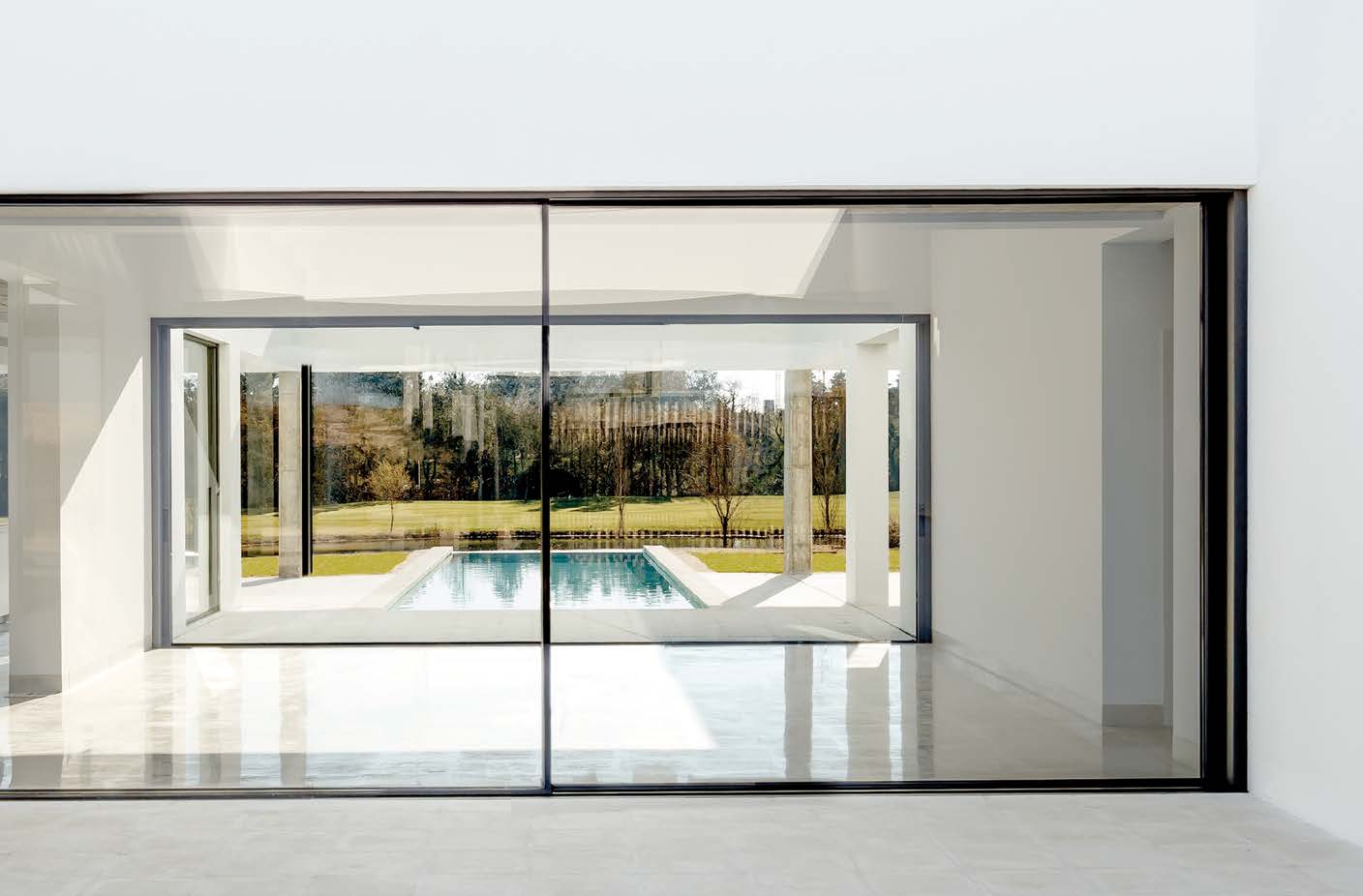
Space-Saving
In compact homes, every square foot counts. Sliding interior doors excel at conserving floor space. Unlike traditional hinged doors that require clearance to open and close, sliding interior glass doors operate parallel to the wall. This design frees up valuable floor area, allowing for more flexible furniture placement and easier movement throughout your home.
Bedrooms and home offices often benefit most from sliding interior doors. A typical swing door might limit where you can place a desk or bed, but a sliding door gives you the freedom to use every corner effectively.
In a child’s room, for instance, you could tuck a bookshelf or toy chest right up against the wall where a standard door would normally swing.
Noise Reduction
Peace and quiet are precious commodities in any home. Interior glass sliding doors can hugely cut down on noise transfer between rooms. The way these doors are installed – often with brushes or seals along the edges – creates a more effective sound barrier than many conventional doors.
Different materials offer varying levels of sound insulation. Solid wood sliding doors tend to block more noise than their hollow-core counterparts. For ultimate quietness, look for sliding interior doors with added insulation or specialised acoustic glass panels. These can be particularly useful for home cinema rooms or music practice spaces.
Light Control
Natural light can make or break a room’s ambiance. Sliding interior doors give you unprecedented control over how much light flows between spaces. This flexibility allows you to adjust the atmosphere of your home throughout the day.
Glass sliding interior doors are particularly adept at managing light flow. They can create a sense of openness while still defining separate areas. For instance, a frosted glass sliding door between a bathroom and bedroom allows light to filter through while maintaining privacy. In a home office, clear glass sliding doors let you keep an eye on the kids while working, but can be closed to signal ‘do not disturb’ time.
Types of Sliding Interior Doors
Sliding interior doors come in various styles, each offering unique benefits and design possibilities.
Pocket Doors
Pocket doors slide completely into the wall when open, disappearing from view. This clever design is ideal for tight spaces where every centimetre counts. In bathrooms or walk-in wardrobes, pocket doors eliminate the need for door swing clearance, allowing for more usable space.
While pocket doors offer excellent space-saving benefits, they require careful planning during installation. The wall cavity must be properly prepared to house the door when it’s open. This often means relocating electrical wires or plumbing. Despite these challenges, many homeowners find the sleek look and space-saving advantages well worth the effort.
Barn-Style Sliders
Barn-style sliding doors bring a touch of rustic charm to modern homes. These interior sliding doors hang from an exposed track above the doorway, adding an architectural element to your room. The visual appeal of barn doors makes them a popular choice for living areas and bedrooms.
Brushed nickel tracks and handles lend a contemporary feel, while black iron fittings emphasise the rustic aesthetic. Some homeowners opt for custom-made hardware to create a truly unique look.
Glass Panel Sliders
Glass panel sliding doors are an excellent choice for homeowners who want to maintain an open feel while still having the option to divide spaces. These interior sliding glass doors allow light to flow freely between rooms, making smaller spaces feel larger and brighter.
For areas where privacy is a concern, frosted or textured glass offers a solution. These options obscure visibility while still allowing light to pass through. Some glass panel sliding doors feature adjustable opacity, giving you control over the level of privacy as needed.
Bypass Doors
Bypass doors consist of two or more panels that slide past one another. They’re commonly used for closets or as room dividers in larger spaces. Interior sliding doors of this type are particularly useful in children’s rooms or shared bedrooms, where they can separate sleeping areas from play spaces.
The overlapping design of bypass doors means they don’t require as much wall space as other sliding door types. This makes them a good choice for areas where wall space is limited. In a home office, for example, bypass doors can hide storage areas without taking up valuable wall space that could be used for shelving or artwork.
Sliding Interior Doors in Open Plan Living
Open plan living has become increasingly popular in modern homes, and sliding interior doors play a key role in this design trend. These doors offer the flexibility to create distinct areas within a larger space while maintaining an open feel. Interior sliding doors allow homeowners to adapt their living areas to suit different needs throughout the day.
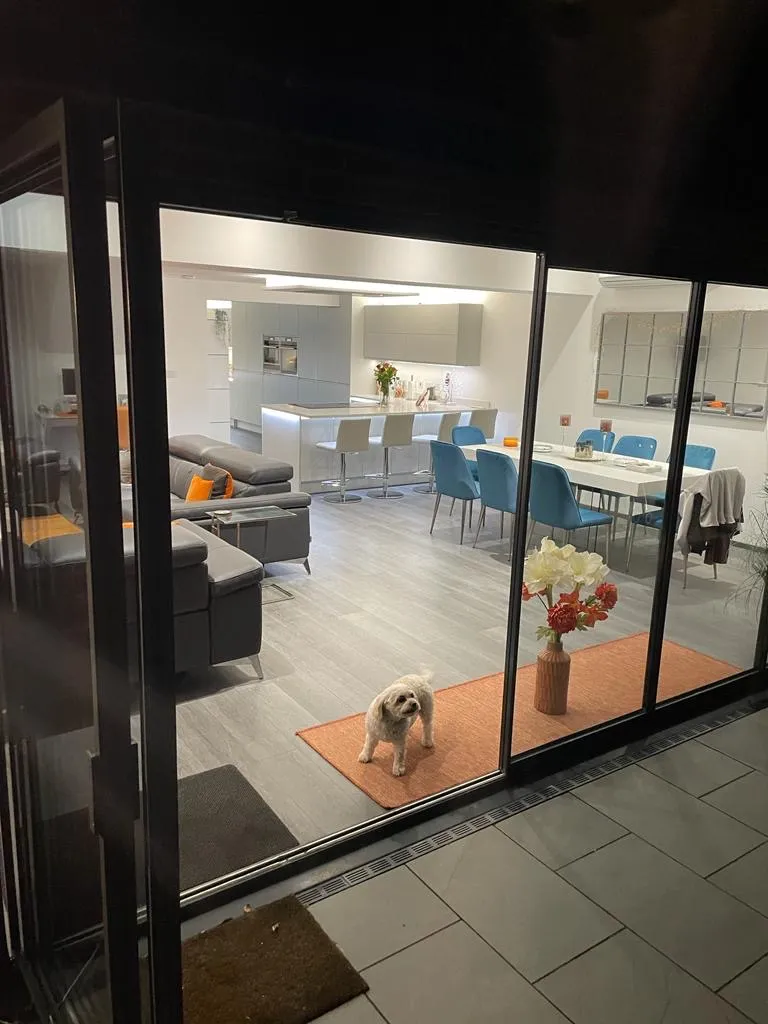
Interior Sliding Doors as Flexible Room Dividers
In open plan homes, interior glass sliding doors serve as movable walls, allowing you to quickly change the layout of your space. For example, you might use glass interior sliding doors to separate a dining area from the living room during a dinner party, then open them up to create a larger space for socialising afterwards. This flexibility is particularly useful in smaller homes where rooms need to serve multiple purposes.
While open plan living promotes a sense of togetherness, it can sometimes lead to noise issues. Sliding doors for interiors can help manage sound levels between different areas. A solid wood sliding door between a home office and the main living area, for instance, can provide a quiet workspace when closed, but still allow for easy access to the rest of the home when open.
Interior Glass Sliding Doors: Kitchen-Dining Connections
The kitchen is often the heart of the home, and sliding interior doors can help integrate it with dining areas in a flexible way. You might use sliding glass interior doors to connect the kitchen and dining room, allowing cooking aromas and conversation to flow freely when open, but containing cooking mess and noise when closed.
Interior sliding doors can also help with temperature control between kitchen and dining areas. During summer, you can close the doors to keep the heat from cooking contained in the kitchen. In winter, opening the doors allows warmth from the kitchen to spread to the dining area, creating a cosy atmosphere for meals.
Home Office Solutions with Interior Sliding Doors
As more people work from home, the need for dedicated office space has grown. Sliding interior doors offer an elegant solution for creating a home office within an open plan living area. You can use interior patio doors to section off a corner of your living room as a workspace, providing privacy during video calls or focused work time.
Even when open, sliding doors can provide visual cues to separate work and living spaces. The track of a sliding door on the ceiling or floor can act as a subtle boundary, helping family members recognise when you’re in ‘work mode’ without completely cutting you off from the rest of the home.
Interior Sliding Doors for Period Properties
Incorporating sliding interior doors into period properties requires a delicate balance between modern functionality and historical charm. These doors can provide space-saving solutions without compromising the character of older homes. By choosing the right style and materials, sliding doors for interiors can complement and even highlight the unique features of period properties.
Victorian Terrace Renovations
Victorian terraced houses often feature long, narrow layouts that can benefit from the space-saving qualities of sliding interior doors. In these homes, replacing traditional swing doors with pocket doors can free up valuable floor space in hallways and small rooms. For example, a sliding door between the living room and dining room can create a more open feel while still allowing the option to separate the spaces when needed.
Preserving Original Features
When installing sliding interior doors in Victorian properties, it’s important to consider the existing architectural elements. Ornate plasterwork, ceiling roses, and decorative cornices are hallmarks of Victorian design. Interior sliding glass doors can be a good choice here, as they allow these features to remain visible even when the door is closed.
Cottages
In cottage-style homes, sliding barn doors can add a rustic touch that complements the property’s pastoral charm. These interior sliding doors work well for pantries, laundry rooms, or as a feature between the kitchen and dining area. Choosing reclaimed wood or a distressed finish for your sliding doors can help them fit effortlessly with the cottage aesthetic.
When selecting sliding doors for interiors in cottage properties, make sure to think about the scale. Cottages often have lower ceilings and smaller room dimensions than modern homes. Opting for sliding doors with simpler designs and lighter materials can prevent them from overwhelming the space.
Interior Sliding Doors in Georgian Homes
Georgian homes are known for their symmetry and elegant proportions. Sliding interior doors can be incorporated into these properties in ways that respect and even highlight these classical design principles. For instance, using a pair of matching sliding doors to flank a central fireplace can create a sense of balance in a Georgian living room.
Material Choices
In Georgian properties, the choice of materials for your sliding interior doors is key. Glass interior sliding doors with thin, black metal frames can echo the look of traditional Georgian windows while adding a modern twist. Alternatively, solid wood doors with raised panels can mirror the style of original Georgian joinery.
Customisation and Design Features of Sliding Interior Doors
Sliding interior doors offer a wide range of customisation options, allowing homeowners to tailor their doors to suit specific design preferences and practical needs. From material choices to hardware selections, these doors can be adapted to complement any interior style. The ability to personalise sliding doors for interiors means they can serve as both practical room dividers and striking design elements.
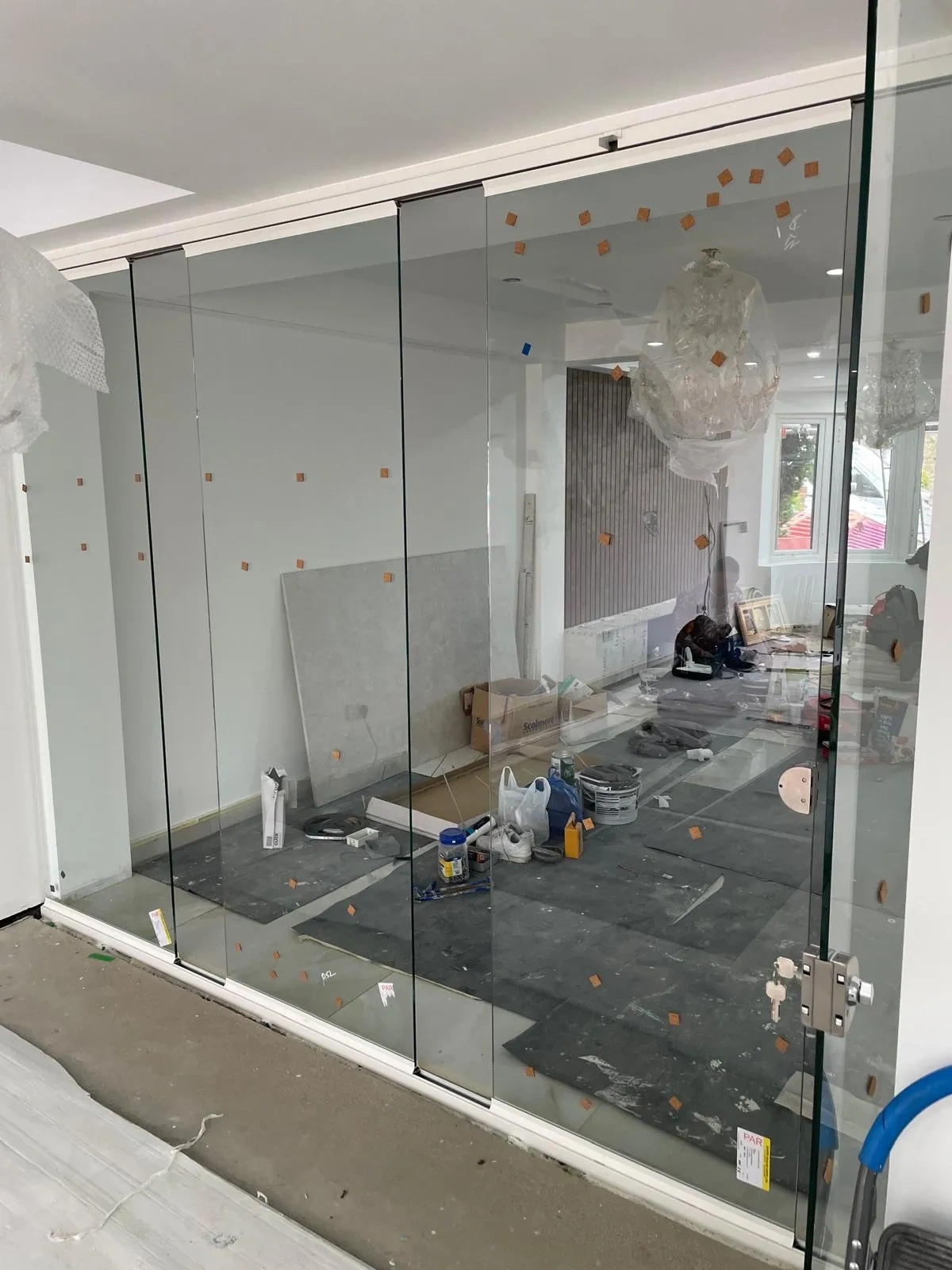
Materials
The material you choose for your sliding interior doors can dramatically impact both their appearance and performance. Solid wood doors bring warmth and traditional elegance to a space, while also providing good sound insulation. On the other hand, glass interior sliding doors can make a room feel more open and allow light to flow between spaces.
For those seeking durability and low maintenance, composite materials offer an attractive alternative. These engineered materials can mimic the look of wood or other natural substances while providing improved resistance to warping and environmental factors. Some composite sliding doors for interiors even incorporate recycled materials, appealing to environmentally conscious homeowners.
Hardware and Handle Options
Sleek, minimalist handles in brushed steel or chrome can give doors a contemporary edge, while ornate brass fixtures might better suit a traditional decor. The track system itself can also become a design feature, with exposed rails adding an industrial touch to barn-style doors.
Advancements in door hardware have led to the development of silent glide systems for sliding interior doors. These systems use specially designed rollers and tracks to ensure smooth, quiet operation. This feature is particularly valuable in bedrooms or home offices where noise reduction is important.
Decorative Glass Treatments
For those opting for glass interior sliding doors, various decorative treatments can add privacy and visual interest. Frosted glass internal doors offer a balance of light transmission and privacy, while textured or patterned glass can become a focal point in its own right.
In period properties or homes with a more traditional aesthetic, sliding interior doors with stained glass panels can add a touch of artistry. These can be genuine stained glass for authenticity, or modern films that mimic the effect while being more durable and cost-effective.
Paint and Finish Choices
The finish of your sliding interior doors can tie them into your overall colour scheme or make them stand out as a feature. Painted doors offer the widest range of colour options, allowing you to match or contrast with your walls. For a more natural look, stains and varnishes can highlight the beauty of wooden sliding internal doors while protecting the material.
Some homeowners opt for two-tone designs on their sliding interior doors, using different colours or finishes on each side. This approach allows the door to complement different colour schemes in adjoining rooms, adding an extra layer of design flexibility.
Interior Slide and Fold Doors
Interior slide and fold doors, also known as slide and stack doors, represent a unique subset of sliding interior doors, offering exceptional flexibility for large openings. These systems consist of multiple panels that slide and then stack neatly to one side, allowing for a wide, unobstructed opening when fully retracted. Slide and fold doors provide an innovative solution for homeowners looking to create adaptable living spaces.
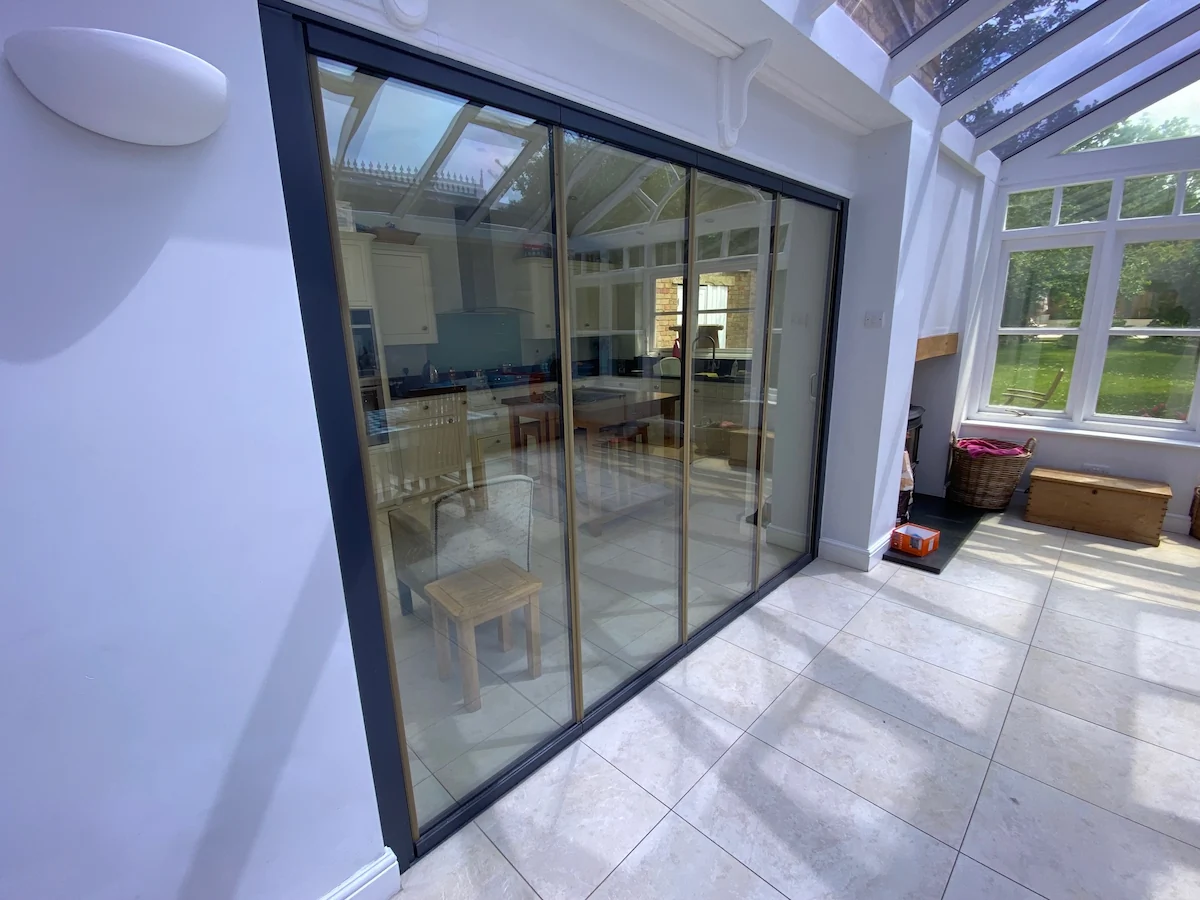
Space-Defining Flexibility
The ability of slide and fold doors to open up large areas makes them ideal for creating multi-functional spaces. For instance, you might use interior sliding glass doors of this type to separate a dining room from a living area, allowing you to have two distinct rooms or one large entertaining space as needed. This flexibility is particularly useful in homes where space is at a premium or for families whose needs change frequently.
Despite their size, well-designed slide and fold doors are surprisingly easy to operate. Many systems use precision-engineered tracks and rollers to ensure smooth movement, even for large panels. Some sliding doors for interiors in this category feature soft-close mechanisms, adding an extra level of convenience and safety.
Large Opening Solutions
One of the main advantages of slide and fold doors is their ability to create very wide openings. This makes them particularly useful for connecting indoor and outdoor areas. For example, a set of interior patio doors in a slide and stack configuration could open up an entire wall of a living room to a garden or terrace, effectively doubling the usable space for summer parties or family gatherings.
When used as a connection to outdoor areas, slide and fold doors need to be properly sealed to prevent drafts and water ingress. Many modern systems feature advanced weatherproofing, including multi-point locking systems and robust seals, ensuring that your home remains comfortable and energy-efficient even in inclement weather.
Energy Efficiency
The large glass panels often used in slide and stack sliding interior doors can have implications for a home’s energy efficiency. However, advancements in glazing technology mean that these doors can now offer excellent thermal performance. Double or triple glazing, low-emissivity coatings, and thermally broken frames can all contribute to maintaining a comfortable indoor temperature.
In south-facing rooms, large glass interior sliding doors can lead to significant solar gain. While this can be beneficial in winter, it might cause overheating in summer. To address this, some homeowners opt for glass with solar control coatings or install external shading devices to manage heat and light levels throughout the year.
Sliding Interior Doors – Style Meets Function
Sliding interior doors offer a unique combination of practicality and aesthetic appeal. They serve as more than just room dividers; they can become integral elements of your home’s design. By choosing the right sliding doors for interiors, you can address common household challenges while adding visual interest to your living spaces.
Dealing with Limited Space
In compact homes, every square metre counts. Sliding interior doors excel in making the most of limited space. Unlike traditional hinged doors that require clearance to open, internal sliding doors operate parallel to the wall, freeing up valuable floor area. This space-saving quality makes them ideal for small bedrooms, bathrooms, or home offices where every bit of usable space matters.
Interior sliding glass doors can work wonders in small apartments. For instance, a sliding door between the living room and bedroom can create a sense of separation when closed, yet allow the spaces to feel more open when slid aside. Some homeowners even use sliding doors as movable walls, allowing them to reconfigure their living spaces as needed.
Statement Piece Potential
While sliding interior doors are often praised for their practicality, they can also serve as striking design features. A beautifully crafted barn-style door, for example, can become a focal point in a room, adding character and visual interest. The track and hardware of sliding doors for interiors can also contribute to the overall aesthetic, with options ranging from sleek and modern to rustic and industrial.
The ability to customise sliding doors allows homeowners to express their personal style. From choosing unique materials like reclaimed wood or etched glass to selecting eye-catching hardware, there are countless ways to make your interior sliding doors stand out. Some homeowners even commission artists to create one-of-a-kind designs for their doors, turning them into functional pieces of art.
Accessibility Advantages
For those with mobility challenges, sliding interior doors can greatly improve home accessibility. The ease of operation and lack of threshold make them an excellent choice for people using wheelchairs or walkers. Interior patio doors in a sliding configuration, for instance, can provide easy access to outdoor spaces without the obstacles presented by traditional hinged doors.
Universal Design
The principles of universal design, which aims to create spaces usable by all people regardless of age or ability, often incorporate sliding doors. Their flat tracks can be installed flush with the floor, eliminating trip hazards. Some sliding interior doors even feature automated systems, allowing them to be opened and closed with the push of a button or a voice command.
Sliding Interior Doors FAQ
What are the advantages of glass sliding doors?
Glass sliding living room doors offer numerous benefits. They allow natural light to flow between spaces, making rooms feel brighter and more open. These doors can also create a sense of continuity between adjacent areas while still providing the option to separate them when needed.
Can sliding doors be used in period properties?
Absolutely. Crittall style doors have become particularly popular for period properties, offering a sleek, industrial look that complements older architectural styles. When choosing sliding doors for a period home, it’s important to select designs and materials that harmonise with the property’s original features.
Can sliding doors be used in conjunction with underfloor heating?
Sliding doors can indeed be used with underfloor heating systems. The key is to ensure proper insulation of the doors to prevent heat loss. It’s also important to consider the door’s threshold design to ensure it doesn’t interfere with the heating system or create cold spots near the door area.
What are the latest trends in sliding door design?
One of the current trends is ultra slim sliding doors, which feature minimal framing. These doors maximise glass area, creating an unobstructed view and allowing more light into the space. Other popular trends include oversized panels, dark frame colours, frameless glass doors, and textured or patterned glass.
Can sliding doors be used as exterior doors?
Yes, sliding back doors are a popular choice for connecting indoor and outdoor spaces. They provide a wide opening and unobstructed views of the garden or patio. When used as exterior doors, it’s important to choose models with proper weatherproofing and security features to ensure they’re suitable for external use.
How do I choose between sliding doors and bifold doors?
The choice between sliding doors and folding sliding glass doors depends on your specific needs and space. Sliding doors typically require less space to operate and offer a more unobstructed view when closed. Bifold doors, on the other hand, can open up a larger aperture but need more clearance when fully open.
We’d Love to Help You
Vision Glass Doors is a designer, manufacturer, and installer of premium door systems. We are a family run business with over 20 years’ experience and 5,000 installations across the UK.
Our leading range of door systems include Ultra Slim – Slide and Turn Doors, Slimline Sliding Patio Doors and Frameless Glass Doors. Suitable for various internal and external applications, they are applicable to residential and commercial projects.
Click Quick Quote Online for a free quotation within 24 hours. Alternatively, call or email us on 01582 492730 or at info@visionglassdoors.co.uk.

